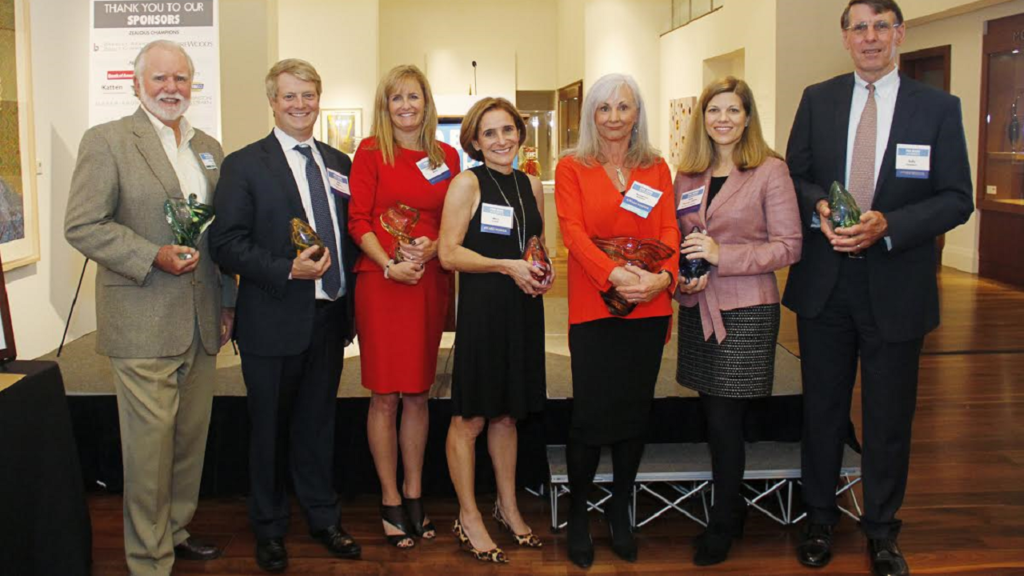 Special to the Philanthropy Journal
Special to the Philanthropy Journal
By Christopher Kelly
In the not too distant past, we practiced “Kitchen Table Philanthropy,” meaning we sat with our family and planning team to make decisions as to when, where and what amount we would contribute toward our charitable goals. Just as the family unit has evolved, so has our philanthropy. We still want to make gifts that alleviate issues or improve the situation of those less fortunate; but today we want to know that our gift has impact, both now and in the future. To that end, we have moved away from strictly cash gifts made here or there and are now focusing on specific objectives, utilizing accumulated wealth. We also want options to consider in achieving our plans with ease and longevity so that our charities have a reliable stream of income. This is why Blended Gift Strategies are now a staple in effective gift planning for today’s donor.
Blended Giving is an organized strategy designed to assist with a donor’s current giving plans while enhancing their generosity through a legacy gift. The concept is appealing because it offers a more productive means of maintaining the current commitment and the ultimate legacy; conveniently and without impeding other personal financial goals. As with any planned giving technique, the donor’s overall comfort level is a prime focus while respecting the charity’s gift acceptance policies and mission purposes. When these objectives are achieved the results produce a satisfied donor who has the potential of making a profound impact on the charitable mission, more so than even they imagined possible. Sadly, many donors and even gift planners tend to think that Blended Gift Strategies are complex. While some can be, it is actually the donor and their goals that will establish the level of complexity. By determining the donor’s charitable intent it can be relatively simple to analyze the options and generate the most effective blended gift path.
 To make the point of how customizing the strategy can regulate the complexity of the gift, the following simple scenarios demonstrate the value and ease of blending in achieving current and long term philanthropic goals:
To make the point of how customizing the strategy can regulate the complexity of the gift, the following simple scenarios demonstrate the value and ease of blending in achieving current and long term philanthropic goals:
- A donor who has established a long term goal through annual contributions can utilize a life income, or split-interest vehicle, such as the Charitable Remainder Trust(CRT) or Charitable Gift Annuity(CGA) to generate their personal benefits, (i.e., charitable income tax deductions, diversification of portfolio assets, etc), and generate a new source of disposable income. This is where the blending can take effect. Using some, or all, of the distribution from the split-interest vehicle, the donor can generate the means of continuing their current gifting pattern and the residuum in the trust portfolio or CGA contract is dedicated to the named charity as their legacy. Regardless of the monetary value of the residuum, the combination of the annual giving and the ultimate legacy, allows this donor to have a larger impact than they might have thought possible… SIMPLE but EFFECTIVE.
- Blending in a little more philanthropic planning; our donor could follow the previous gifting plan, but include a testamentary gift designated in their Will or Estate Plan. Once again, the life income vehicle is generating disposable income that can continue the current gifting, then blending the residuum from that vehicle with the testamentary gift increases the ultimate legacy. The plan does not impact the donor’s current life style or spending pattern because the gift is generated from accumulated wealth, not disposable income. This blending strategy enables our donor to increase their impact on a beloved charitable mission comfortably and effectively. Planning increases impact without a decrease in current financial comfort.
- The larger, or major gift objective can be achieved through planning and a blending strategy. Once again, determining the primary philanthropic goal(s) enables the donor and their planning team to customize a plan and generate the desired contribution amount to achieve the goal, or even exceed it. As with the previous examples, traditional planned giving can be used to generate the social capital to continue the current giving and/or create the envisioned legacy. Some donors even elect to use Life Insurance to supplement their ultimate legacy. Using some of the new disposable income to make the premium payments on the Life Insurance and naming the charity as the sole beneficiary of the death benefit, the major gift commitment is efficiently established. This type of gift planning can be effective as part of a capital campaign, assisting donors in creating larger commitments that accelerate the progress of that campaign without taxing their own personal finances or stressing those charged with the success of the campaign.
These scenarios are just the start of the many options and opportunities that can be explored with simple communication and organized planning. Blending strategies can accomplish a donor’s expectations and serve as motivation to other donors and prospects. Those inspired donors may even come from the same family, blending generations and ongoing commitments to beloved charities through good philanthropy. Taking all of these opportunities in mind, there is no telling what a donor can cook up… So maybe blended giving is still very much a part of good old fashioned Kitchen Philanthropy!
Chris Kelly is the Planned Giving Product Specialist with PNC Institutional Advisory Solutions. He has more than 26 years’ worth of trust, estate, and philanthropic planning experience. Chris is a frequent guest speaker for various planned giving councils, educational programs, and donor seminars.





